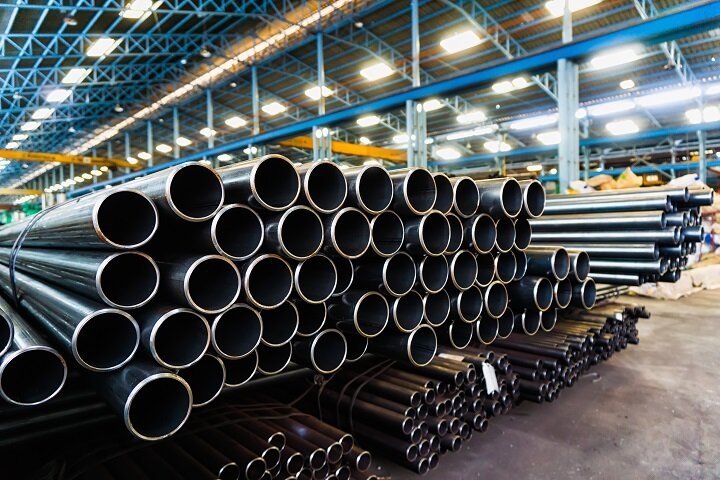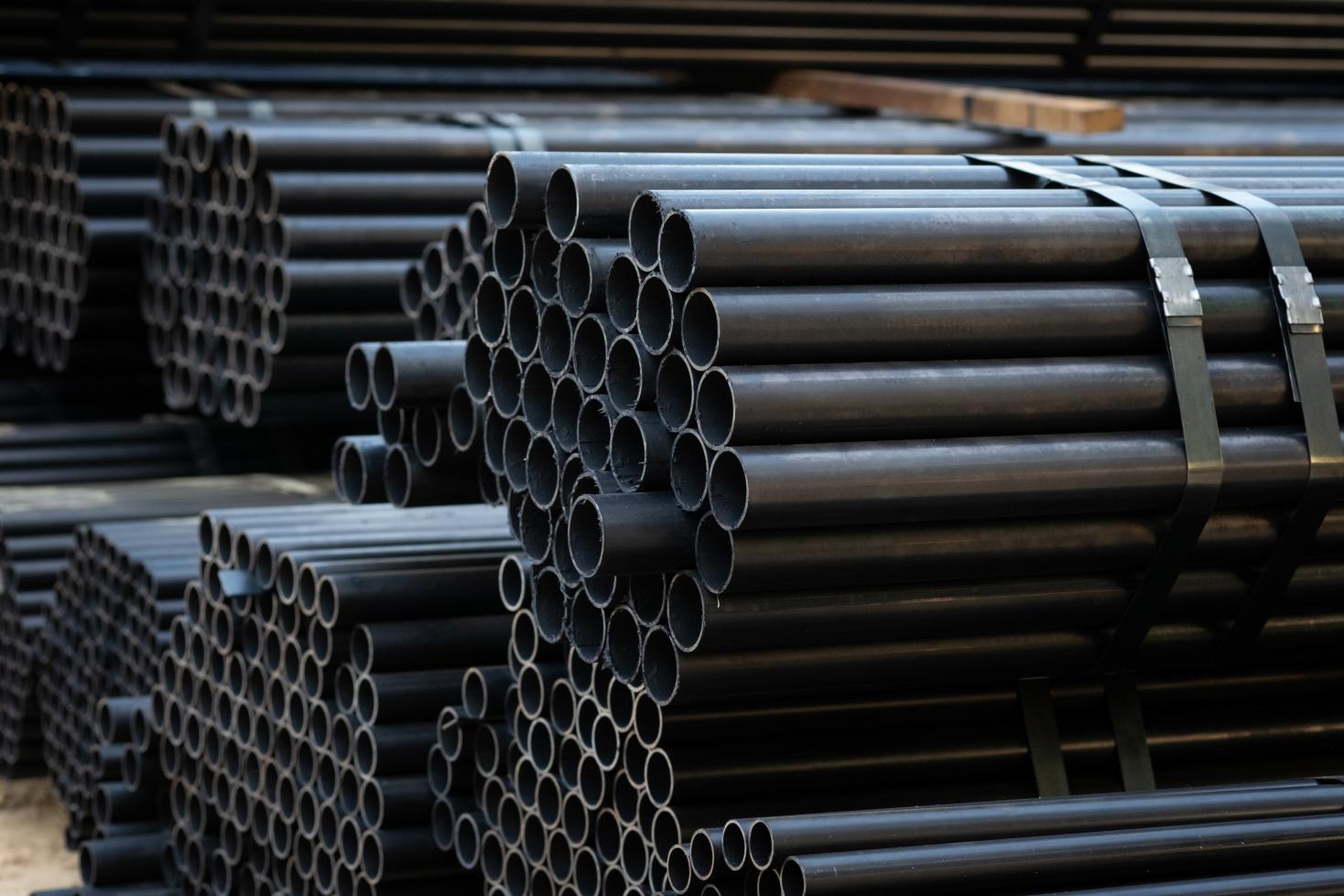Strength in Flow: The Versatility of ASTM A53 Seamless Pipes
ASTM A53 Seamless Pipes, governed by the ASTM (American Society for Testing and Materials) standard, encompass both seamless and welded steel pipes, ranging from NPS 1/8" to NPS 26". Designed for pressure and mechanical applications, these pipes find extensive use across industries due to their versatility and reliability. Seamless pipes, particularly emphasized within this standard, play a crucial role in various sectors such as construction, oil and gas, manufacturing, and infrastructure development. Their seamless construction ensures superior strength, durability, and efficiency, making them indispensable for conveying fluids and gases under varying conditions. This introduction highlights the significance of ASTM A53 Seamless Pipes in facilitating seamless flow and functionality across diverse industrial applications.

Understanding ASTM A53 Seamless Pipes
Definition and Specifications
ASTM A53 Seamless Pipes serve diverse purposes, primarily functioning as structural steel or conduits for low-pressure pipelines. Benefiting from advanced production techniques, these pipes offer a balance of durability and efficiency. The ASTM A53 specification defines them as a carbon steel alloy suitable for structural applications or low-pressure pipelines, highlighting their versatility across industries.
Manufacturing Process
The manufacturing of ASTM A53 Seamless Pipes involves intricate processes tailored to ensure their quality and performance.
- Production Process of Cold-Drawn Seamless Steel Tubes:
Beginning with the preparation of tube blanks, the process proceeds through heating to facilitate shaping. Perforation, often achieved through drilling, follows, creating the initial hollow structure. Heading molds the tube ends, ensuring uniformity and precision. Annealing, a crucial step for stress relief and grain refinement, precedes pickling to remove surface impurities. Oiling provides temporary corrosion protection. Multiple cold-drawing stages refine dimensions and enhance strength. Further treatments include heat treatment for structural integrity, straightening for uniformity, hydraulic testing for quality assurance, marking for identification, and finally, storage for distribution.
- Production Process of Hot-Rolled Seamless Steel Pipe:
The process initiates with the preparation of tube billets, followed by heating to high temperatures to enable shaping. Perforation is achieved through various methods, including drilling. The subsequent steps involve three-roller or cross-rolling and continuous rolling to shape the billet into a seamless tube. De-piping ensures uniformity and removes surface imperfections. Sizing is performed to achieve the desired dimensions. Cooling follows to set the structure, with straightening ensuring uniformity. Hydraulic testing verifies the integrity of the pipe. Marking facilitates identification, with additional detection measures employed to ensure the integrity of the seamless steel pipe.
Characteristics and Properties
ASTM A53 Seamless Pipes exhibit distinct characteristics and properties, categorized into different types and grades to meet varied requirements.
A53 pipes are classified into three types: F, E, and S, each tailored for specific applications. Among these, Type S stands out as a seamless pipe available in Grades A and B, offering superior performance and reliability. Notably, ASTM A53 Grade B Seamless Pipe emerges as the most sought-after product under this specification due to its robustness and versatility. Additionally, A53 pipes are often dual-certified to meet the requirements of A106 B Seamless pipe, enhancing their applicability and usability across industries.
Versatility in Industrial Applications
Oil and Gas Industry
- Transportation of Crude Oil and Natural Gas:
ASTM A53 Seamless Pipes play a vital role in the efficient and secure transportation of crude oil and natural gas, ensuring seamless flow across extensive networks of pipelines. Their robust construction and resistance to corrosion make them ideal for withstanding the harsh conditions encountered during transport, safeguarding the integrity of these valuable resources.
- Offshore Drilling Applications:
In offshore drilling operations, where reliability and durability are paramount, ASTM A53 Seamless Pipes are indispensable. These pipes withstand the demanding conditions of marine environments, facilitating the extraction and transportation of oil and gas from offshore reserves. Their seamless construction ensures minimal risk of leaks or failures, contributing to the safety and efficiency of offshore drilling operations.
Construction Industry
- Structural Applications:
ASTM A53 Seamless Pipes are integral to the construction industry, providing essential support and stability in various structural applications. From building frames to bridges, these pipes offer unmatched strength and durability, ensuring the longevity and reliability of constructed infrastructure.
- Plumbing and HVAC Systems:
In plumbing and HVAC systems, ASTM A53 Seamless Pipes serve as the backbone, facilitating the efficient conveyance of water, steam, and gases. Their seamless construction minimizes the risk of leaks or corrosion, ensuring the smooth operation of these essential systems in residential, commercial, and industrial settings.
Manufacturing Industry
- Machinery and Equipment Manufacturing:
Within the manufacturing sector, ASTM A53 Seamless Pipes find widespread use in the production of machinery and equipment. From conveyance systems to structural components, these pipes provide the necessary strength and reliability to withstand the rigors of industrial operations, contributing to the efficiency and productivity of manufacturing processes.
- Automotive Industry:
In the automotive industry, ASTM A53 Seamless Pipes play a crucial role in various applications, including exhaust systems, chassis components, and structural reinforcements. Their superior strength and durability enhance the safety and performance of vehicles, ensuring a reliable and efficient transportation solution for consumers worldwide.
Advantages of ASTM A53 Seamless Pipes
Strength and Durability
ASTM A53 Seamless Pipes are celebrated for their robust strength and enduring durability, making them essential in demanding applications that require durable, resilient materials. Their seamless structure prevents the vulnerabilities typically seen in welded joints, greatly enhancing their ability to perform under high pressure and in extreme operational conditions. This resilience is especially crucial in sectors such as oil and gas and construction, where reliability is key.
Resistance to Corrosion
ASTM A53 Seamless Pipes offer superior corrosion resistance, which is vital for maintaining structural integrity and longevity in corrosive environments or in extreme weather. This makes them particularly well-suited for use in marine operations, chemical processing, and outdoor installations, where they are often exposed to harsh elements.
Uniformity in Dimensions
The dimensional uniformity of ASTM A53 Seamless Pipes ensures consistent quality and performance, which is critical for achieving a perfect fit and ease of installation. This uniformity eliminates the need for extensive modifications during setup and helps maintain efficient flow dynamics within piping systems, crucial for their optimal functioning.
Cost-effectiveness
ASTM A53 Seamless Pipes provide significant cost advantages despite their superior attributes. Their long-lasting nature minimizes the frequency of replacements and maintenance, leading to substantial cost savings over time. Moreover, their straightforward installation and minimal upkeep further enhance their economic viability, making them a preferred choice for a broad range of applications.
Environmental and Sustainability Considerations
Energy Efficiency in Transportation
ASTM A53 Seamless Pipes significantly enhance energy efficiency in transportation systems by ensuring smoother and more effective flow of gases and liquids. This improvement helps reduce energy consumption and associated costs across various transportation and distribution networks, fostering more sustainable energy practices.
Recyclability and Reuse
A notable environmental benefit of ASTM A53 Seamless Pipes is their full recyclability. Constructed from steel, these pipes can be entirely recycled at the end of their useful life, reducing waste and the demand for new raw materials. This recyclability supports sustainable economic practices by enabling the reuse of materials in new manufacturing processes.
Compliance with Environmental Regulations
Produced under rigorous standards, ASTM A53 Seamless Pipes comply with a wide array of environmental regulations. Their production emphasizes minimizing environmental impact through controlled emissions and efficient manufacturing methods, contributing to global sustainability efforts.
Challenges and Future Outlook
Emerging Technologies in Seamless Pipe Manufacturing
The seamless pipe sector, including ASTM A53 products, stands to gain from emerging technologies that aim to boost efficiency, quality, and environmental suitability. Innovations such as automated manufacturing and new alloy developments are poised to transform production methods, resulting in higher quality and more sustainable outputs.
Addressing Potential Challenges in Production and Distribution
The production and distribution of ASTM A53 Seamless Pipes face challenges like fluctuating raw material prices, supply chain disruptions, and diverse global standards. Addressing these issues requires strategic planning, investments in supply chain robustness, and adaptation to global market trends to ensure consistent supply and maintain competitive market positions.
Opportunities for Innovation and Improvement
There are abundant opportunities for innovation within the ASTM A53 Seamless Pipes industry. Advances in material science and increasing demands for environmentally friendly and high-performance materials open paths for significant enhancements in pipe manufacturing. Collaborative efforts among industry stakeholders and regulatory bodies are essential to drive innovations that align with evolving industry standards and consumer expectations.
Final Thoughts
The versatility of ASTM A53 Seamless Pipes lies in their strength, durability, corrosion resistance, and uniformity in dimensions, making them indispensable across various industries. From providing robust performance in high-pressure environments to contributing to energy efficiency and environmental sustainability, these pipes play a crucial role in modern infrastructure. As emerging technologies continue to revolutionize seamless pipe manufacturing, addressing challenges and seizing opportunities for innovation will further enhance the capabilities and applications of ASTM A53 Seamless Pipes, ensuring their continued significance in fluid and gas transportation systems worldwide.






